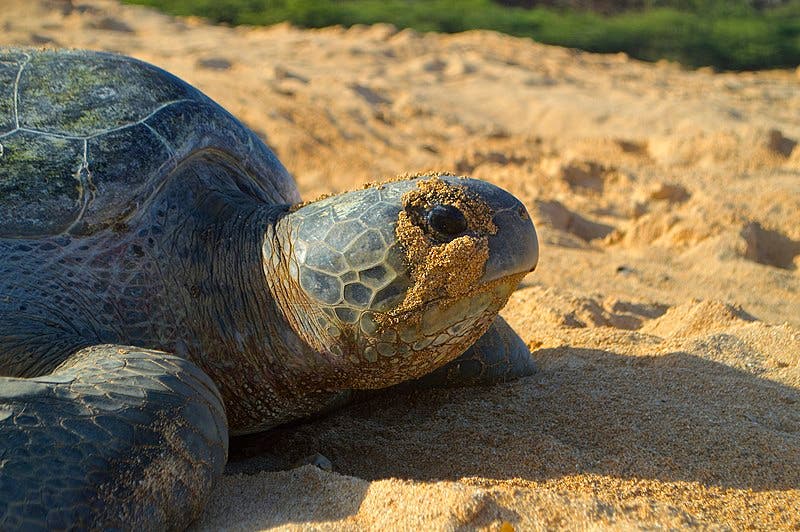
Sea turtles are migratory species from the moment they are ready to come into this world. After they’ve hatched out of their nesting grounds on the beaches of Florida, Yucatan, or other eastern coasts of the Americas, they immediately embark on a frenzied race towards the sea.
On their journeys, these younglings can end up traveling more than 10,000 miles across the entire North Atlantic, before returning to their original breeding grounds.
Clearly, sea turtles are amazing navigators, likely using the earth’s geomagnetic field to pinpoint their position and orientate. However, don’t imagine that their internal GPS is very accurate.
According to a new study, sea turtles often miss their mark, sometimes by hundreds of miles. This can add thousands of extra miles to their migrations as they take less straightforward paths to their destination. So, instead of Google Maps, think of the sea turtle’s positioning system more like a very crude map — it’s far from perfect, but it gets the job done.
“By satellite tracking turtles travelling to small, isolated oceanic islands, we show that turtles do not arrive at their targets with pinpoint accuracy,” says Graeme Hays of Australia’s Deakin University.
“While their navigation is not perfect, we showed that turtles can make course corrections in the open ocean when they are heading off-route. These findings support the suggestion, from previous laboratory work, that turtles use a crude true navigation system in the open ocean, possibly using the earth’s geomagnetic field.”
Hays and colleagues attached satellite tags to 33 nesting green turtles (Chelonia mydas). Originally, the researchers wanted to find out more about the extent of the animals’ movements in order to identify key areas for conservation efforts.
But as the researchers tracked the turtles, they noticed that they were traveling to isolated islands and submerged banks — and they did so rather awkwardly.
The turtles were tracked from the moment they left their nesting beaches on the island of Diego Garcia in the Indian Ocean, from which they embark on a journey towards their foraging grounds across the western Indian Ocean.
According to the satellite data, 28 out of 33 turtles didn’t reorient themselves daily or at a fine scale. As a result, the turtle would often travel hundreds of miles out of their way before correcting their course. This confusion most often occurred in the open ocean.
So, instead of reaching their small island destination with pinpoint accuracy, the turtles more often than not overshot their targets or wasted time searching for their favorite remote islands during the final stages of their migration.
“We were surprised that turtles had such difficulties in finding their way to small targets,” Hays says. “Often they swam well off course and sometimes they spent many weeks searching for isolated islands.
“We were also surprised at the distance that some turtles migrated. Six tracked turtles travelled more than 4,000 kilometers to the east African coast, from Mozambique in the south, to as far north as Somalia. So, these turtles complete round-trip migrations of more than 8,000 kilometers to and from their nesting beaches in the Chagos Archipelago.”
Although this study shows that highly accurate turtle navigation is a myth, the findings do not subtract from their impressive migrating abilities. After all, this is the first study that showed that sea turtles are capable of reorienting themselves in the open ocean, which implies they actually have a mental map of some sort.
The study also has important applications for sea turtle conservation. Once their nesting season is done, turtles travel extensively across the open ocean. As such, conservation efforts have to be coordinated across large spatial scales, covering many countries.
In the future, the researchers would like to employ novel tag technology that will enable them to not only determine their location but also the turtles’ compass heading.
“Then we can directly assess how ocean currents carry turtles off-course and gain further insight into the mechanisms that allow turtles to complete such prodigious feats of navigation,” Hays says.
The findings were reported in the journal Current Biology.






